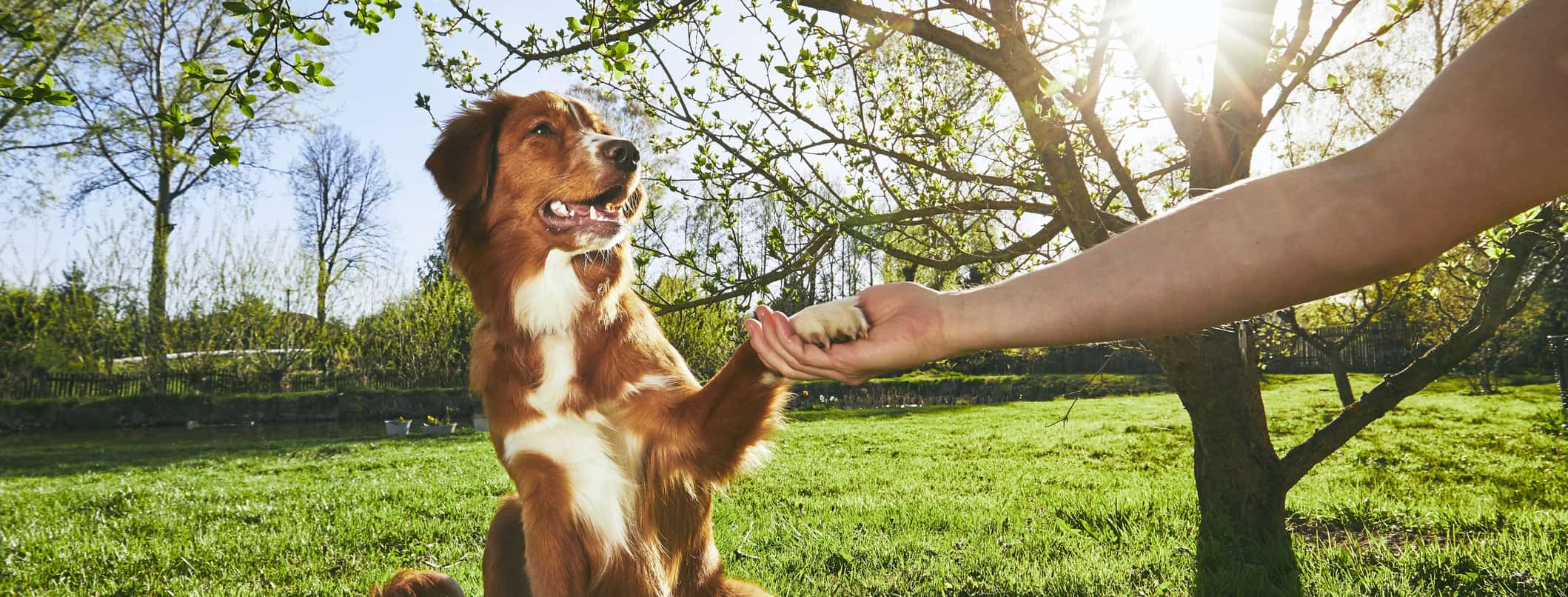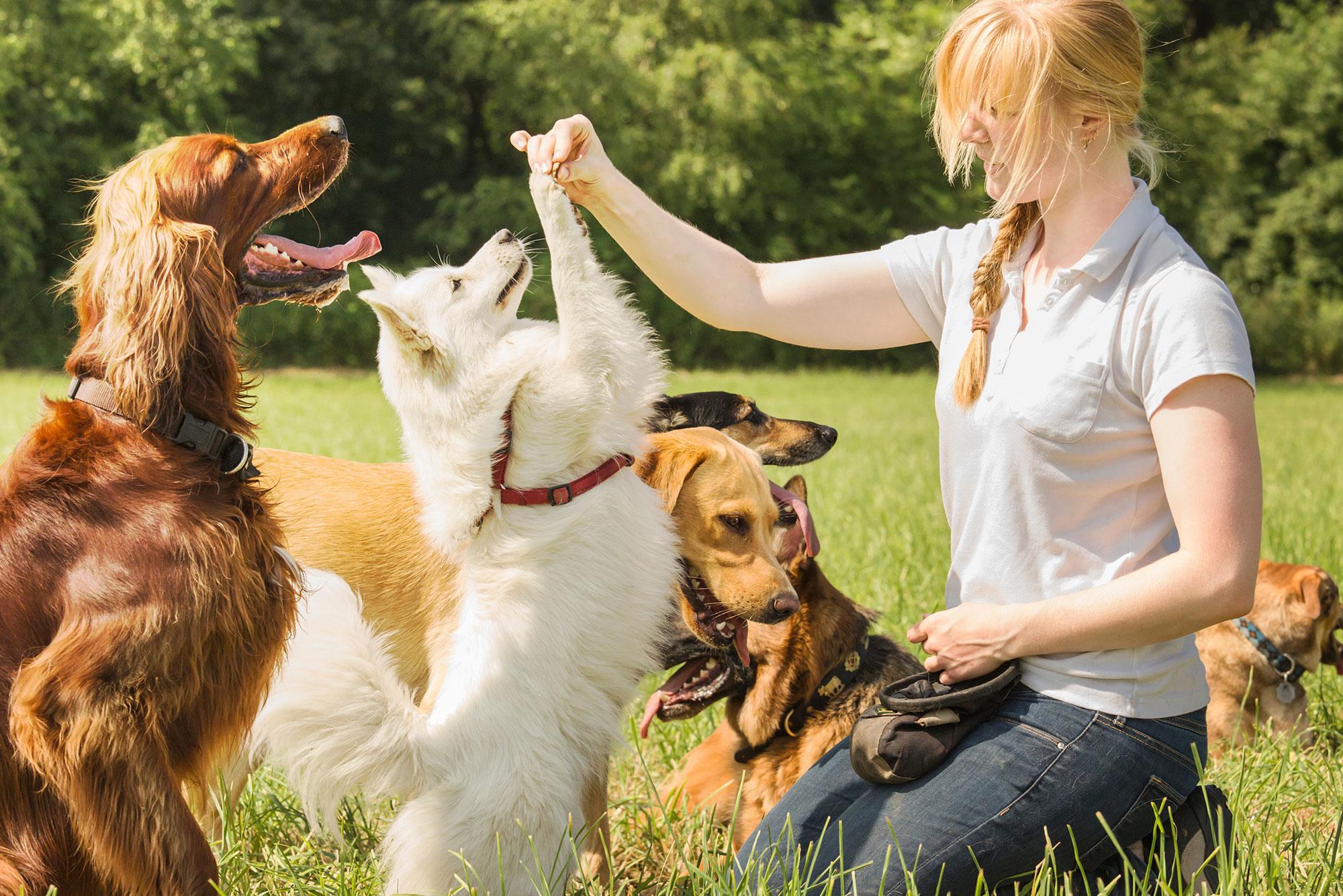Necessary Methods for Effective Dog Training You Required to Know
Necessary Methods for Effective Dog Training You Required to Know
Blog Article
Vital Tips for Effective Dog Training: An Overview for Family Pet Owners
Effective pet training is a complex process that calls for a critical method customized to both the pet's temperament and the proprietor's purposes. Trick elements such as developing constant commands, employing favorable support, and facilitating early socialization play vital roles in cultivating a well-adjusted canine friend. Lots of family pet proprietors come across obstacles that can prevent progress, leading to disappointment and unpredictability. Recognizing how to navigate these obstacles can substantially boost the training experience, ultimately changing the relationship in between owner and pet dog. What are the vital methods that can be used to make sure success in this undertaking?
Comprehending Canine Habits
Comprehending canine habits is vital for efficient training and promoting an unified partnership in between canines and their owners. dog training. Pets connect largely through body language, vocalizations, and activities, making it crucial for proprietors to translate these signals accurately.

Socialization plays a substantial role in dog habits; exposure to numerous settings, individuals, and various other pets can substantially affect a pet's temperament. Elements such as breed features and specific temperament should guide training methods, as some breeds might have details behavioral characteristics that require customized strategies. By comprehending these aspects, proprietors can develop a supportive setting that urges positive behavior, leading to effective training results and a deeper bond with their animals.
Establishing Consistent Commands
Efficient communication with your pet starts with establishing consistent commands. This foundational component of training is essential for promoting understanding between you and your animal. Consistency in the commands you use makes certain that your dog can dependably link specific words or expressions with the preferred behaviors.
When choosing commands, select clear, unique words that are very easy to say and set apart from each other. Avoid utilizing similar-sounding commands that might puzzle your canine. As an example, making use of "sit" and "remain" is suitable, yet "sit" and "hit" might lead to misconceptions.
In addition, preserve the same tone and quantity for each and every command. Pets are sensitive to singing signs, so differing your tone can produce complication.
It is similarly crucial to make sure that all member of the family are on the same page pertaining to the commands used. A united front in command use will stop blended signals and reinforce the discovering procedure.
Favorable Reinforcement Strategies
The power of positive reinforcement in dog training hinges on its ability to urge desired actions via incentives and praise. This strategy is based in the principle that actions followed by beneficial end results are more probable to be repeated. By integrating favorable reinforcement into your training regimen, you can successfully shape your canine's habits in a positive way.
To execute favorable reinforcement, it's important to identify what inspires your pet dog, whether it be deals with, playthings, or verbal praise. When your pet dog carries out a desired action, such as resting on command, quickly award them with a treat or love. This association between the command and the favorable result reinforces their understanding.
It's vital to timing the rewards properly; delivering the reinforcement within secs of the wanted actions assists your dog make the connection (dog training). Furthermore, consistency is vital-- guarantee that all household participants utilize the very same commands and incentive systems to prevent confusion

Progressively, you can decrease the regularity of deals with as your dog finds out the actions, transitioning to applaud or intermittent incentives. This approach not just promotes a solid bond between you and your dog yet additionally advertises a positive learning atmosphere, making training a pleasurable experience for both.
Socialization and Communication
Continually revealing your canine to a range of settings, people, and various other pets is vital for their social growth. Socialization needs to start early, preferably during the important home window of 3 to 14 weeks, when puppies are most responsive to brand-new experiences. However, older pet dogs can additionally profit from recurring socializing efforts.
Introduce your pet to various setups, such as parks, pet-friendly shops, and city locations. This direct exposure aids them adapt to different stimuli, minimizing anxiousness and fear reactions. his response Motivate favorable interactions with other pets and individuals, making certain that these encounters are secure and regulated to cultivate self-confidence.
Utilize structured playdates with well-mannered pets, as this can boost your dog's social abilities and show them ideal actions. Obedience classes and training sessions also supply exceptional possibilities for socialization, enabling your pet dog to engage with others in a monitored atmosphere.
Screen your pet dog's body movement throughout communications, as this other will certainly assist you determine their comfort level. Progressively increase direct exposure to more challenging scenarios while guaranteeing that each experience is positive. A well-socialized pet is most likely to show balanced behavior, making them a pleasure to have in any setting.
Attending To Typical Training Difficulties
Every pet dog owner will come across training difficulties at some time, despite their canine's age or socializing degree. Determining usual issues such as stubbornness, distractions, and terror can aid in developing efficient approaches for improvement.

Distractions during training sessions can thwart emphasis. To battle this, start training in a silent atmosphere with marginal stimuli. Progressively present interruptions as the dog becomes a lot more proficient in commands. Short, frequent training sessions are additionally reliable in keeping focus.
Terror can hinder a canine's discovering process. Gradual desensitization to the source of fear, coupled with positive support, can help minimize stress and anxiety. Persistence is essential; never compel a dog right into a situation that creates distress, as this may aggravate the concern.
Ultimately, understanding and dealing with these typical difficulties with a structured method will cultivate an extra efficient training experience, strengthening the bond between canine and owner while advertising effective learning.
Conclusion
In summary, effective canine training counts on an extensive understanding of canine behavior, the establishment of constant commands, and the application of positive support techniques. Socializing plays a crucial function in creating well-adjusted pet dogs, while attending to usual training challenges requires patience and versatility. By carrying out these necessary strategies, pet proprietors can cultivate a strong bond with Learn More their dogs and promote desirable behaviors, ultimately resulting in a harmonious partnership in between humans and their canine friends.
Understanding dog actions is crucial for effective training and fostering an unified relationship in between dogs and their proprietors.Socializing plays a significant duty in pet habits; exposure to different environments, people, and various other animals can significantly influence a pet's character.The power of favorable support in canine training exists in its capacity to encourage desired actions through rewards and appreciation. By integrating positive support into your training routine, you can successfully shape your dog's behavior in a useful manner.
In recap, successful pet training relies on a thorough understanding of canine actions, the facility of regular commands, and the application of positive support methods.
Report this page